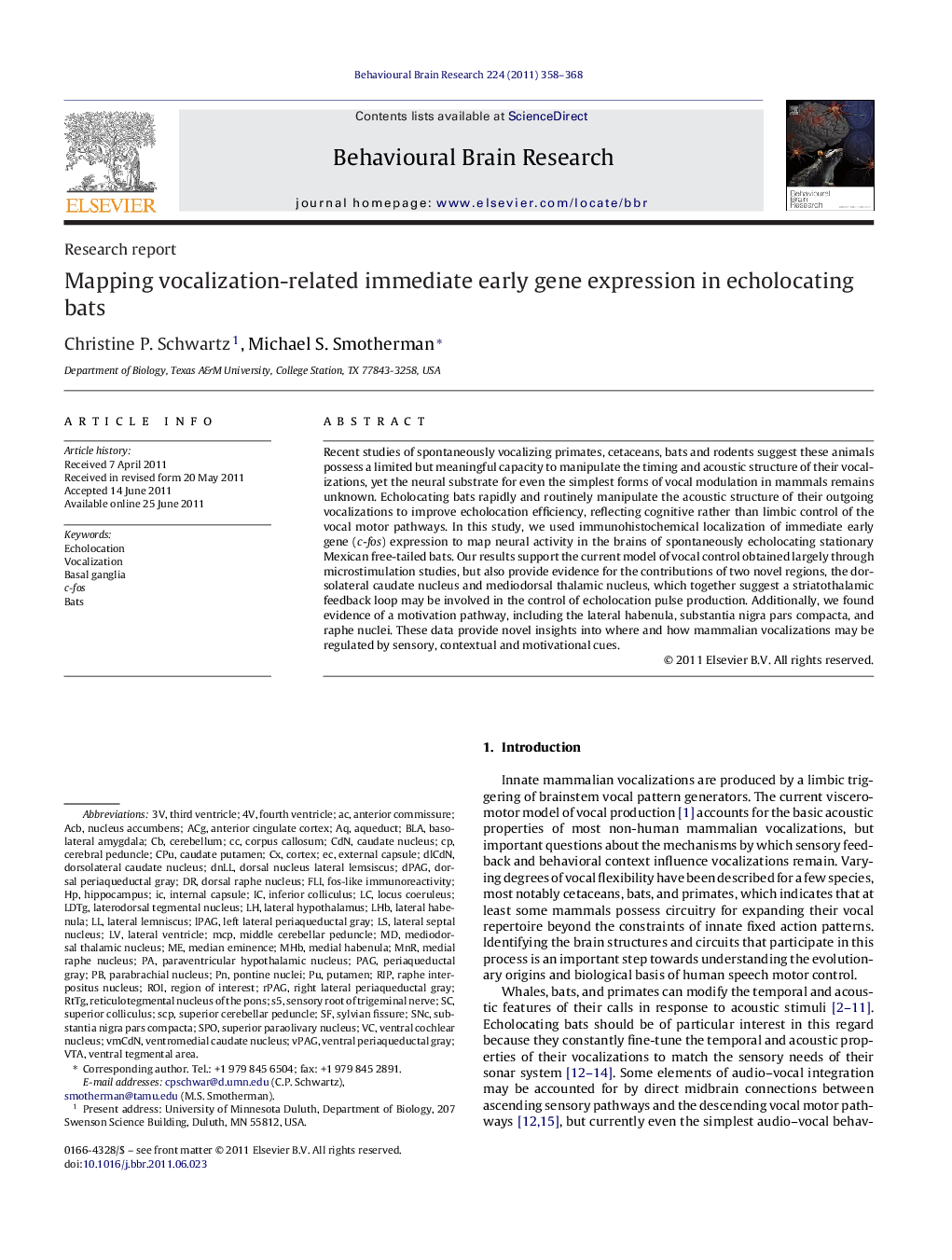| Article ID | Journal | Published Year | Pages | File Type |
|---|---|---|---|---|
| 4313657 | Behavioural Brain Research | 2011 | 11 Pages |
Recent studies of spontaneously vocalizing primates, cetaceans, bats and rodents suggest these animals possess a limited but meaningful capacity to manipulate the timing and acoustic structure of their vocalizations, yet the neural substrate for even the simplest forms of vocal modulation in mammals remains unknown. Echolocating bats rapidly and routinely manipulate the acoustic structure of their outgoing vocalizations to improve echolocation efficiency, reflecting cognitive rather than limbic control of the vocal motor pathways. In this study, we used immunohistochemical localization of immediate early gene (c-fos) expression to map neural activity in the brains of spontaneously echolocating stationary Mexican free-tailed bats. Our results support the current model of vocal control obtained largely through microstimulation studies, but also provide evidence for the contributions of two novel regions, the dorsolateral caudate nucleus and mediodorsal thalamic nucleus, which together suggest a striatothalamic feedback loop may be involved in the control of echolocation pulse production. Additionally, we found evidence of a motivation pathway, including the lateral habenula, substantia nigra pars compacta, and raphe nuclei. These data provide novel insights into where and how mammalian vocalizations may be regulated by sensory, contextual and motivational cues.
• c-fos expression was used to identify brain areas active during echolocation. • Vocalization-related activity was distinguished from hearing-related activity. • Regions previously identified via evoked vocalizations were also active during spontaneous vocalizing. • Novel foci of vocalization-related activity were found in basal ganglia and thalamus.
